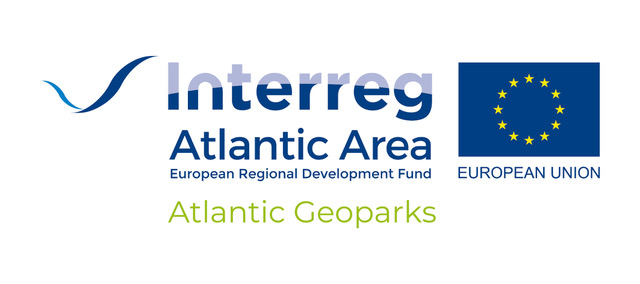Paiva Walkways
a case study provided by Arouca UNESCO Global Geopark, Portugal
Since 20th June 2015, the northeastern area of the Arouca Geopark has benefitted from a new tourism infrastructure project, which has allowed safe contact between the visitors and the wild nature on the banks of the Paiva River. The latter carved impressive geomorphological features in the Arouca Geopark and separates two important mountains: Freita, in the south, and Montemuro, in the north. As well as the spectacular scenery, this river is of national and international value for white-water adventure sports such as rafting, kayaking and canoeing.
Paiva Walkways are a wooden pathway, which extends about 9 km along the left bank of Paiva river, between the village of Espiunca and Areinho fluvial beach. This pathway crosses an area with five important geosites (Paiva Gorge, Aguieiras Waterfall, Vau, Salto and Espiunca Fault). The geosites are part of the Natura 2000 Network, allowing for contact with several important wildlife species of fauna and flora, some of them presented and explained over nine interpretative panels along the walkways – the “biospots”. A journey through Paiva Walkways allows the observation of this specific geodiversity and biodiversity, as well as the enjoyment of adventure sports. There are also two viewpoints with interpretative panels on the white-water rapids, explaining their geological origin.
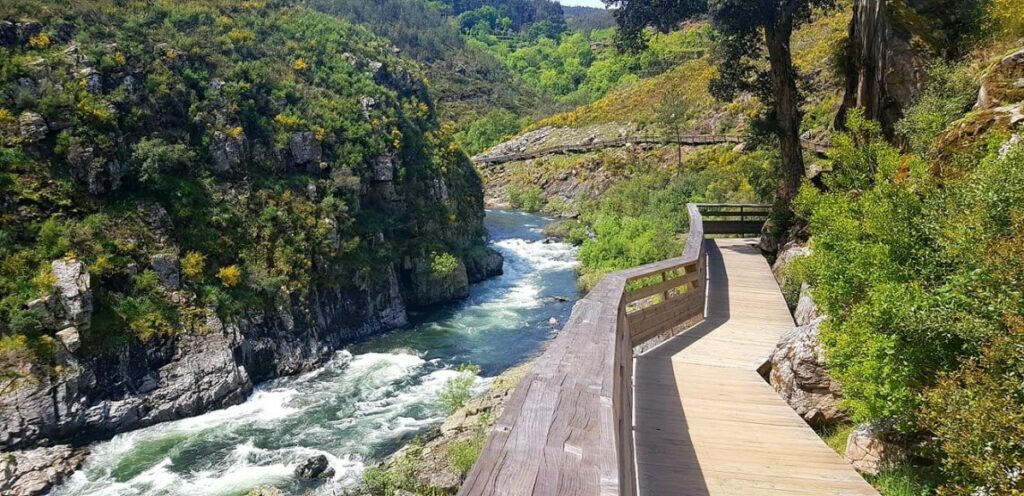
Paiva Walkways are managed by Arouca Municipality and to access the route bookings are available online (www.passadicosdopaiva.pt). Several educational and tourism services are being promoted, providing a growing source of opportunities for the development of commercial enterprises and employment creation.
Initially, Paiva Walkways opened without ticket sales or people controls which, being something new and innovative in Portugal, resulted in a mass influx of tourists, such that the Arouca Municipality estimated that there were about 300,000 visitors in 2015. These numbers caused a number of problems in the locality which had to be addressed. The infrastructure was closed during the end of 2015 and into the beginning of 2016 due to a fire that had destroyed part of the wooden walkway. This provided an opportunity to re-assess how to manage visitor numbers, so when the walkway re-opened in 2016 a booking system was in place that limited the number of visitors, per day, controlled mass tourism in a much more sustainable way and enabled the production of statistical reports.
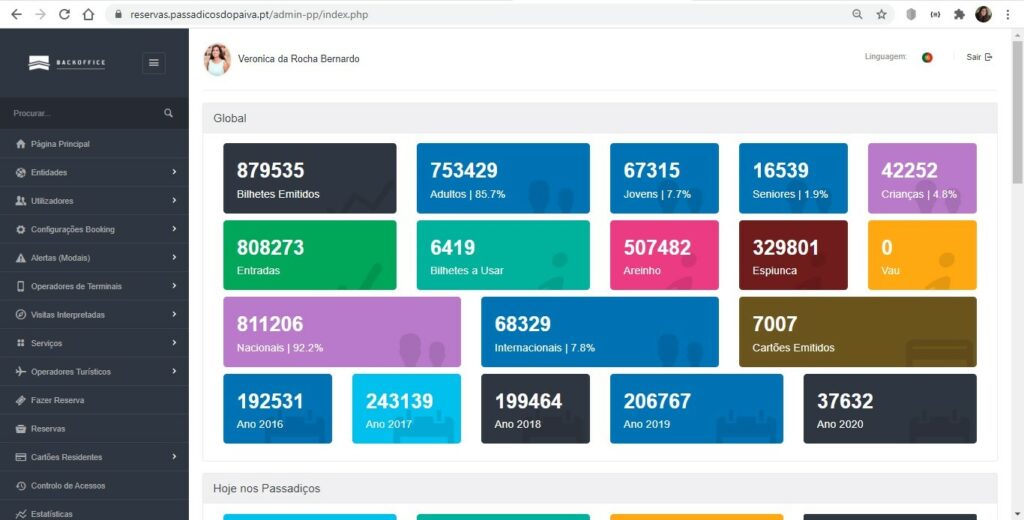
Adding to the estimated 300,000 visitors in 2015, Paiva Walkways has now received almost 1,200,000 people (Table 1), from around the world, creating a great economic impact at the Arouca UNESCO Global Geopark namely in the tourism trade sector such as accommodation, foodservices, local commerce, transfer services and activities. As result of this impact, Paiva Walkways has won, several times, the World Travel Awards in the following categories: Europe’s Leading Tourism Development Project (2016, 2017, 2018 and 2019), Europe’s Leading Adventure Tourist Attraction (2018 and 2019) and World’s Leading Adventure Tourist Attraction (2018 and 2019).
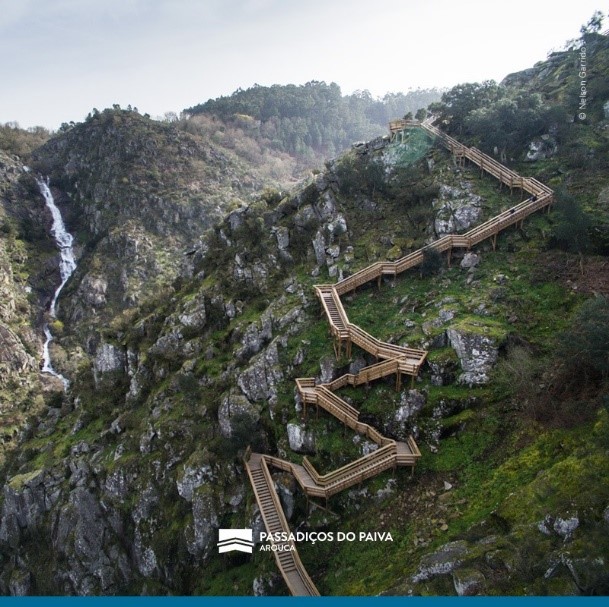
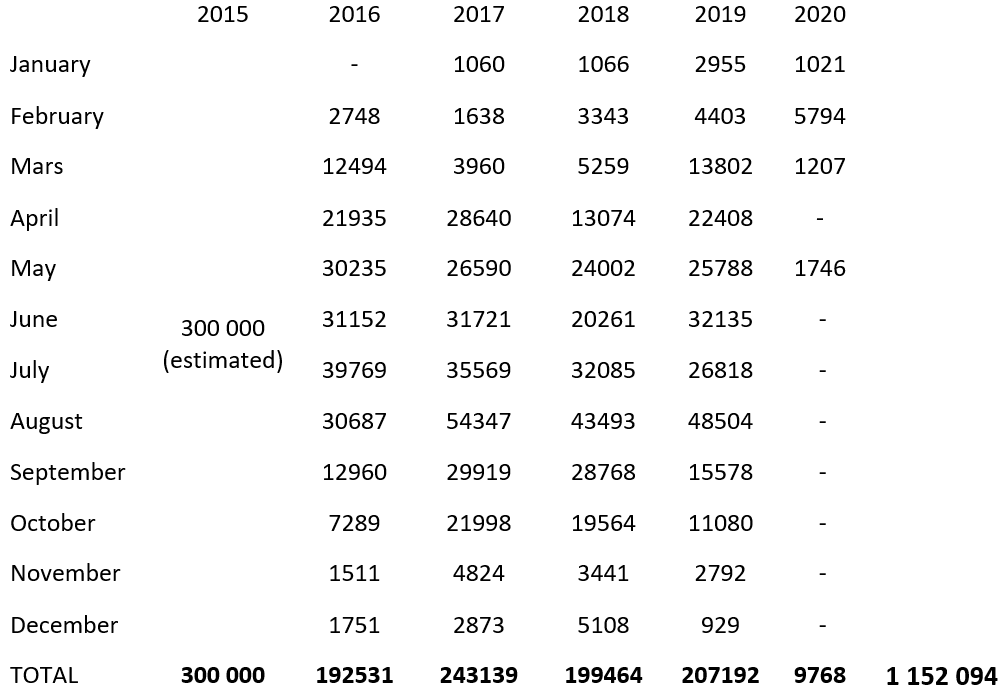
The main ticket issuing market is, by proximity, Spain, followed by France. Spain represents 50% of international Paiva Walkways’ visitors and France represents 25%.
In terms of intercontinental visitors, Paiva Walkways receive an interesting number of visitors from Brazil and United States of America.

From these data, a detailed analysis has been carried out as part of a student’s Masters research dissertation.
International Paiva Walkways’ Visitors in 2017 – detailed analysis
Bernardo, V. (2018). Visitantes internacionais dos Passadiços do Paiva: motivação, experiência, satisfação e canais de distribuição. Masters Dissertation: ESHT – Instituto Politécnico do Porto. 164 p.
This research dissertation was developed as a study to understand the reasons of international tourists to visit Paiva Walkaways in 2018. It used a quantitative methodology through survey by questionnaire, sent via e-mail to 3,639 contacts contained in the database of on-line reservations. The specific objectives were to understand the factors that influence the motivations of the visitors to visit Paiva Walkways (Push & Pull factors). This study also examined which were the main distribution channels that attracted the international visitors. According to literature review, there is a relation between the motivation and the experience, however, in this case the satisfaction only relates to aesthetics and entertainment domains. The study conclusions identified the Pull factors – the attraction of the walkways – was closely aligned with the reason for the visit.
The following sections describe the study’s sample population and the outcomes of their responses to the statements in the questionnaire.
Sample profile
The sample of the study consists of 204 international tourists, who responded to the survey, of which 47.5% are female and 52.5% are male. The ages vary, essentially, between 25 and 64 years, and the most frequent age ranges are 25-35 and 35-44, with percentages of 28.9% and 29.5% respectively. 67.2% of these visitors have academic qualifications at the Masters level or higher and the highest percentage, 45.8%, earn a gross, individual monthly income, between € 1,001 and € 2,000. By proximity to the destination, Arouca Geopark, the most prevalent market is the Spanish with 55.4%, followed by the French market with 21.6%.
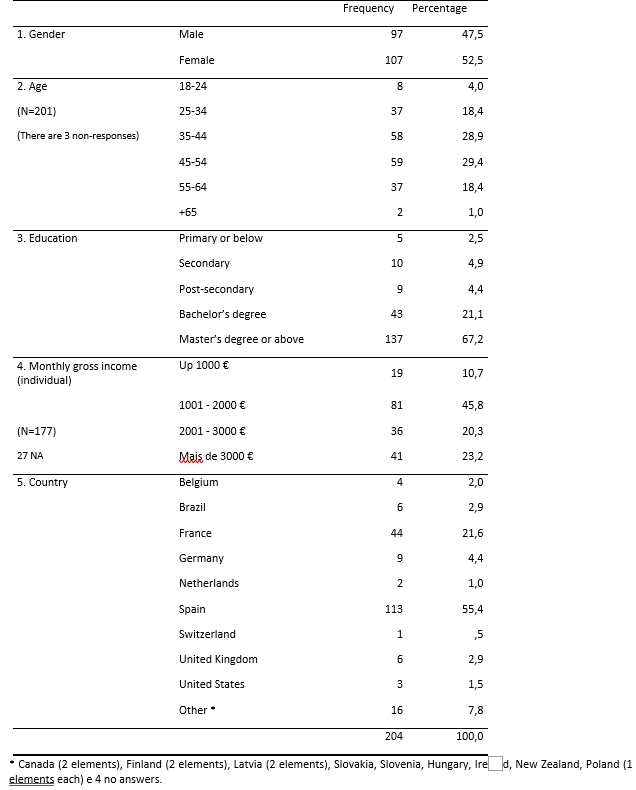
Travel Features
Regarding travel to Arouca Geopark, and specifically Paiva Walkways, the main reason for the trip (92.2%) was for a holiday. Arouca Geopark was the main destination for 30.9% of respondents. 92.6% indicated that this was the first time that they had visited Paiva Walkways and the majority, 51.5%, travelled with their family. In terms of the time in advance that they booked their Paiva Walkways visit, visitors who booked less than a month before departure predominate with 46.6% of responses. Of interest is that 59.3% of these visitors did not stay overnight in Arouca and, regarding the organization of the trip, 100% of the visitors stated that they had organized it independently, without resorting to travel agencies and / or tour operators.
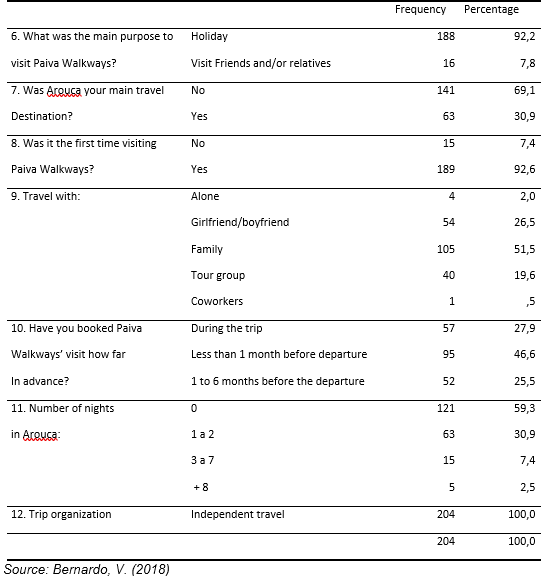
Push-pull Motivations
When the study examined the motivation of international visitors who visited Paiva Walkways in 2017, the theory of Push and Pull was used.
In the Push items, the average agreement is higher for “To experience something different”, “To refresh my mind”, “To spend time with family / friends” and “To have fun”. It is lower to “To find adventure and excitement“, “To participate in sports activities” and “Paiva Walkways are a famous attraction“, – nevertheless, all items have an average value higher than the midpoint of the measurement scale.
In the Pull items, the average agreement is higher for the statement “To experience the natural environment and heritage”, followed by “To visit the Geopark”, “Because of the well-organized tourist information”, “Because of the suitable climate” and also “Because of the regional gastronomy ”.
“It is closer than other attractions” and “To do scientific work”, are the items with an average value, the latter presenting itself as lower than the intermediate point of the measurement scale.
This suggests them that these visitors are looking for different experiences in a natural environment, and not necessarily an activity holiday. It is reassuring that the data indicates that the Geopark brand is being recognised to wider audiences. Tourism information and other offers, such as local gastronomy are also attractions which enhance the visitor experience.

Distribution channels
The study also investigated how visitors interacted with, and the relative importance of, sources of information when researching about Paiva Walkways.
On average, more importance is given to the channels “Official Paiva Walkways’ website”, and “Websites with information about Paiva Walkways”, which have an average value much higher than the midpoint of the measurement scale. This is followed by “Blogs, forums or social networks” and “Recommendation from family and/or friends” with an average value close to the midpoint of the measurement scale.
“Brochures about Paiva Walkways”, “Advertisements and articles in newspapers / magazines”, “Arouca’s tourism office”, “Guidebooks”, “Radio and TV broadcasts”, “Tourism offices (outside of Arouca)”, “Travel fair” and “Travel agent / tour operator” have an average value below the midpoint of the measurement scale.

Visitor experience
Concerning the tourist experience, this was analysed in terms of:
- educational,
- escapist,
- aesthetic, and
- entertainment.
In the educational domain, the average agreement is higher for “It stimulated my curiosity to learn new things” and “I increased my knowledge“, followed by “I learned a lot during my experience” and “It was a real learning experience“, all items having an average value higher than the midpoint of the measurement scale.
In the escapist domain, the average agreement is higher for “I had the opportunity to relax” and “I totally forgot about my daily routine“. Following are the items “I gated away from a stressful social environment” and “I completely escaped from reality”, items with an average value higher than the midpoint of the measurement scale. “I imagined myself living in a different time and place” presents an average value close to the midpoint of the measurement scale.
In the aesthetic domain, the average agreement is higher for “The path was clean” and “The setting was very attractive“, followed by “The path has quality, close to nature” and “I felt a real sense of harmony“, having everyone the items mean value well above the midpoint of the measurement scale.
In the entertainment domain, the average agreement is higher for “I enjoyed the path”, followed by “I had fun”, “I had an unusual experience”, “I interacted with others” and, finally, “Watching others perform was captivating ”, with all items having an average value higher than the midpoint of the measurement scale.

Satisfaction
Finally, with regard to questions related to visitor loyalty and satisfaction, the average agreement is higher for “It was a good decision to travel to Paiva Walkways”, followed by “I will say positive things about Paiva Walkways”, “I would like to visit a similar place“, “I will suggest visit Paiva Walkways to my family and/or friends“, “This visit was worth my time and effort“, “This travel experience exceeded my expectations” and “I pretend revisit Paiva Walkways” , With all items having an average value well above the midpoint of the measurement scale.

